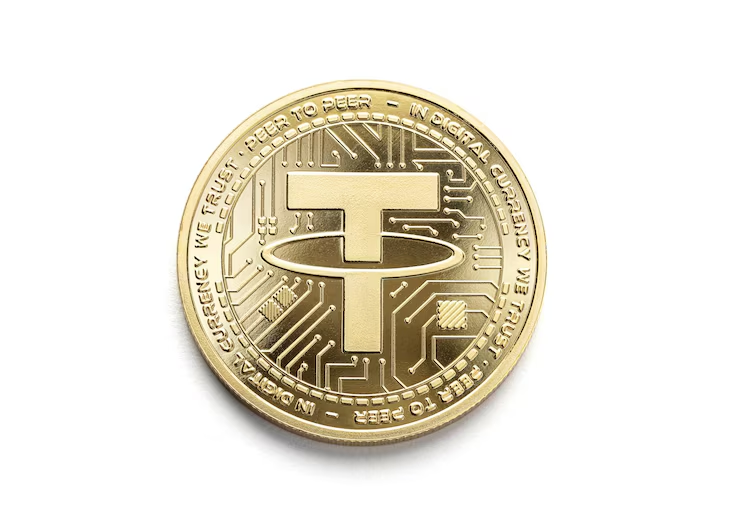USDT TRC20 is swiftly becoming a pioneer in stablecoin transactions in the quickly changing cryptocurrency space.As blockchain technology becomes increasingly integrated into financial systems, users and investors seek reliable and efficient solutions to manage their assets. Tether (USDT), a stablecoin pegged to the US dollar, has solidified its position as a preferred choice. Among its different blockchain implementations, TRC20, built on the Tron network, has garnered significant attention due to its unique advantages.
The Importance of Stablecoins in the Crypto Market
Stablecoins like USDT play a pivotal role in the cryptocurrency market by offering the stability of fiat currencies while retaining the flexibility of blockchain technology. Unlike volatile cryptocurrencies such as Bitcoin or Ethereum, stablecoins are designed to maintain a consistent value, typically pegged to a fiat currency like the US dollar. This makes stablecoins essential for traders looking to hedge against market fluctuations or transfer value without the risks of extreme price volatility.
However, the blockchain a stablecoin operates on is equally important, as it impacts transaction fees, speed, and overall user experience. While USDT was initially issued on the Bitcoin and Ethereum blockchains, the TRC20 version on the Tron network has become a game-changer in stablecoin transactions.
What is USDT TRC20?
USDT TRC20 is a version of Tether that runs on the Tron blockchain. The Tron network, known for its high throughput and low fees, enables faster, more affordable transactions compared to other blockchain networks like Ethereum. By leveraging the advantages of TRC20, users can send and receive USDT with minimal transaction costs, making it an ideal option for large-scale and frequent transfers.
TRC20 is a technical standard used on the Tron blockchain, allowing for the issuance and implementation of tokens. It shares similarities with Ethereum’s ERC20 standard, but it offers distinct advantages in terms of speed and efficiency.
Key Benefits of USDT TRC20 Over Other Versions
1. Ultra-Low Transaction Fees
One of the most significant advantages of USDT TRC20 is the drastically lower transaction fees compared to its ERC20 counterpart on the Ethereum network. Ethereum’s transaction fees, also known as gas fees, can fluctuate wildly, sometimes reaching exorbitant levels during periods of network congestion. This makes Ethereum less suitable for smaller transactions or frequent traders.
On the other hand, TRC20 transactions on the Tron network incur minimal fees, often less than a penny. This affordability makes it particularly attractive for users who conduct multiple daily transactions or send large amounts of USDT across borders. With USDT TRC20, the cost savings can be substantial.
2. Faster Transaction Speeds
In addition to lower fees, USDT TRC20 offers faster transaction speeds compared to its counterparts on other blockchains. The Tron network is capable of processing 2,000 transactions per second, significantly outperforming the Ethereum network, which currently processes around 15-30 transactions per second.
This speed is essential for users who need to transfer assets quickly, especially in fast-moving markets where timing is crucial. Whether you are moving funds between exchanges or paying for goods and services, USDT TRC20 provides near-instant transaction confirmation, improving user experience and minimizing the time spent waiting for transfers to complete.
3. Broad Adoption and Integration
The adoption of USDT TRC20 is growing at an accelerated rate due to its seamless integration with various exchanges and wallets. Major cryptocurrency exchanges like Binance, Huobi, and OKEx support USDT TRC20, allowing users to deposit, trade, and withdraw without having to worry about high fees or delays.
Furthermore, popular crypto wallets, including TronLink and Trust Wallet, offer full support for USDT TRC20, ensuring that users can easily store and manage their USDT tokens without needing to switch between multiple blockchains. The increasing support for TRC20 USDT solidifies its role in the future of cryptocurrency transactions.
Security and Stability on the Tron Network
Security is a top priority in any financial transaction, and USDT TRC20 is no exception. The Tron network uses a robust consensus mechanism known as Delegated Proof of Stake (DPoS), which ensures that transactions are processed efficiently and securely. Unlike Ethereum’s Proof of Work (PoW), which is slower and more energy-intensive, Tron’s DPoS enhances security while maintaining low costs and fast transaction speeds.
Moreover, the stability of USDT itself is key. As a stablecoin, USDT retains its peg to the US dollar, providing users with confidence that their assets will not be subject to the price volatility often seen with other cryptocurrencies. By leveraging the security and efficiency of the Tron network, USDT TRC20 offers a stable and secure platform for transferring value globally.
How USDT TRC20 is Revolutionizing Cross-Border Payments
One of the most promising applications of USDT TRC20 is its use in cross-border payments. Traditional financial systems often involve high fees and lengthy processing times for international transfers, particularly for businesses that deal with large sums of money across borders.
USDT TRC20 eliminates many of these barriers by offering a low-cost, fast, and efficient way to transfer funds globally. Whether it’s remittances, payments for goods and services, or peer-to-peer transfers, the speed and affordability of TRC20 make it an ideal solution for cross-border transactions.
Moreover, the transparency and immutability of blockchain technology ensure that payments are traceable and secure, reducing the risk of fraud or tampering. With USDT TRC20, users can enjoy the benefits of stable, instant payments without the need for intermediaries or the limitations of traditional banking systems.
The Future of USDT TRC20 in DeFi and Beyond
As the adoption of decentralized finance (DeFi) continues to grow, USDT TRC20 is poised to play a major role in this evolving ecosystem. DeFi platforms, which enable users to engage in financial activities such as lending, borrowing, and trading without intermediaries, often rely on stablecoins like USDT as a stable unit of account.
TRC20 USDT’s low fees and fast transaction speeds make it a perfect fit for DeFi applications, where efficiency and cost-effectiveness are crucial. As more users and platforms begin to adopt DeFi, we expect the demand for USDT TRC20 to increase significantly.
Additionally, USDT TRC20 can be integrated into a wide range of blockchain applications, from payment processing to digital asset management. Its versatility and reliability make it an invaluable tool for businesses and individuals alike.
Conclusion: USDT TRC20 Leading the Future of Stablecoin Transactions
The combination of low fees, fast transaction speeds, and widespread adoption positions USDT TRC20 as a critical player in the future of stablecoin transactions. Whether you’re a trader looking for quick, cost-effective transfers or a business seeking a secure and efficient way to handle cross-border payments, USDT TRC20 offers an unmatched solution.
As blockchain technology continues to advance, we expect USDT TRC20 to play a leading role in reshaping the global financial landscape. For those looking to leverage the benefits of stablecoins, USDT TRC20 provides the stability, speed, and security needed to thrive in the digital economy.




